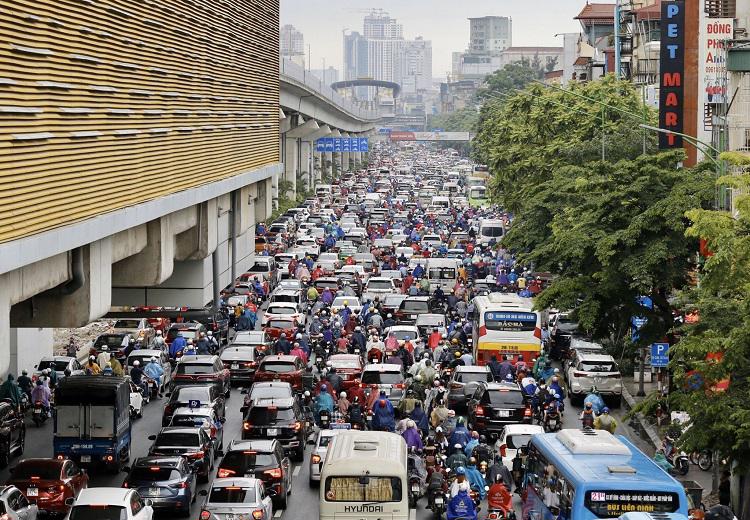
The Hanoi Public Transport Management Center (HPTC) has submitted a project to surcharge drivers going downtown from 2024 to reduce traffic congestion and promote public transportation.
Under the plan, Hanoi would set up 15 tollbooths on nine routes with high traffic density leading to the downtown areas.
“These booths are expected to operate from 5.00-21.00 daily and are equipped with electronic toll collection (ETC) technology. The rates vary depending on the traffic,” said the center.
The HPTC noted that making the congestion charges work is challenging but needs to be done.
The project would be carried out in phases. In the first phase, tollbooths would be installed at nine locations on routes with high traffic density leading to downtown areas. The trial will run until November 30, 2025.
In the second phase, from 2026 to 2030, the cordon line would cover the southern side of the Red River, including Ring Road 3, Thanh Tri Bridge, Phap Van, Mai Dich, Pham Van Dong, Thang Long Bridge, Au Co, Nghi Tam, Yen Phu, Tran Nhat Duat.
Vehicles are stuck in a traffic jam on Nguyen Trai Street in Hanoi's Thanh Xuan District. Photo: Hai Linh/ The Hanoi Times |
In the third phase, after 2031, the toll ring would be expanded to include the northern side of the Red River, including Nguyen Van Linh, Truong Sa, Hoang Sa, Vo Van Kiet, Thang Long Bridge, Au Co, Nghi Tam, Yen Phu, Tran Nhat Duat, Ring Road 3.
"Tolls charged to drivers entering congestion-prone areas benefit everyone on the road, and all of society would gain from the savings in travel time as roads are less congested," the HPTC said.
Tran Thi Phuong Thao, the HPTC's deputy director, said: "A sociological survey shows that an acceptable toll would be about VND22,300 (91 US cents) according to sociological surveys. At that rate, 55% of vehicle owners would be willing to use the car to travel faster, while the rest would use public transport services that are not subject to tolls."
If approved, the move would reduce traffic congestion in the downtown area, encourage people to use public transport services and contribute to environmental protection, Thao stressed.
Transportation expert Phan Le Binh noted that congestion charges had been widely adopted in cities worldwide to reduce traffic congestion.
“In the long term, a congestion charge would change the people’s habit of movement and promote the development of public transport,” Binh said to The Hanoi Times.
Binh gave as an example several large urban cities in Japan or England that charge high parking fees or tolls to enter the city center, resulting in increased use of public transportation.
Hanoi currently has over 7.6 million vehicles, including over 1 million cars, around 6.5 million motorbikes and some 180,000 electric bikes.
By the end of 2021, Hanoi's population was over eight million, but the proportion of land used for transportation was only 9.75%, well below the 20-26% target.
Meanwhile, the number of cars and motorcycles increased at an average rate of 10.2% and 6.7% per year, respectively. Statistics from the Hanoi Police Traffic Department reveal that more than 7.6 million vehicles travel daily on the city's roads, not counting another 1.2 million from other provinces or cities commuting daily to the capital.
"The pace of expansion of the transport zone, which does not match the growing number of vehicles, has led to overloading urban infrastructure, traffic congestion and air pollution," the Police Department stressed.
"Hanoi needs drastic measures to reduce private vehicles and tackle traffic congestion and environmental pollution. Such policies would require great determination and a scientific approach to convince citizens to use public transport," transportation expert Dang Minh Tan told The Hanoi Times.


